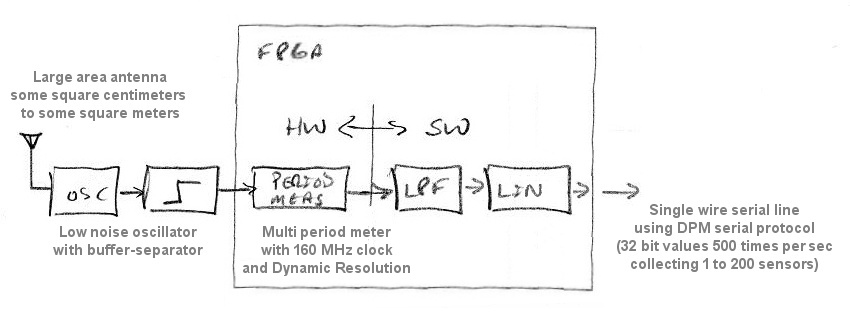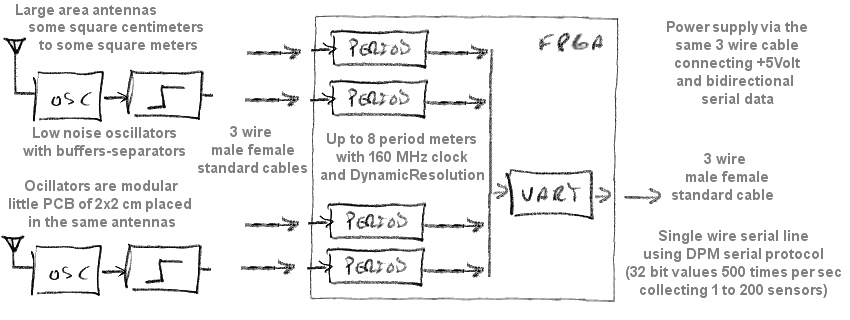Hi livio,
You have very valid points, I don't fundamentally disagree with anything you say, but let me respond to them:
Need to provide the instrument with knobs, buttons, display and power supply, increasing the cost and decreasing the reliability.
I'm thinking some kind of alpha numeric display, either 4 place 7 segment LED, or two of these, or a two line LCD display. The tuner has to be LEDs, probably 22 of them, likely 10mm diameter types. Controls would likely be two rotary encoders, plus volume control, mute button, and power switch. Power supply will likely be through USB port, which will function as a serial port as well.
Very high cost per sensor, difficult scalability, need to use MIDI or CV adapters, to connect it to a PC.
Being a turn-key solution brings with it a higher cost. And to me anyway, requiring the connection to a PC to make it work is a negative thing. Think digital pianos, you want to just turn it on an play it, not wait for your PC to boot. Lots of wires are eliminated in turn-key as well.
Voodoo impossible tuning, having to use a control on the body of the instrument, while adjusting, the hand affects the field.
I've played with this in my prototype, it doesn't seem like it will be a problem. Press a button to null, tweak it with buttons or knob.
Limited number of sensors, probably two and fixed in their function, as "Volume" and "Pitch".
I'm thinking three, with two on the left hand. I don't think traditional Theremin players will be able to handle much more than this.
To avoid Version problems and updates, you should make a synth perfect from the beginning (practically impossible). I do not think it will be possible to reprogram through MIDI or CV. Maybe users will need to buy an FPGA programmer, how much does it cost?
I'm hoping the firm/hardware in the FPGA will be fixed, then the programming of the software in the soft processor inside the FPGA will allow me to fundamentally reconfigure things in the lab and in the field via the serial port.
Very long Time to Market.
You're telling me! ;-) To speed things one could take a page from the Continuum playbook and have someone else do the synthesis engine, but honestly I'm looking forward to it.
Can not change the synthesizer programmed into the FPGA or replace it with another one, for example using FM synthesis or through the most recent Physical Modelling algorithms.
Hopefully "just" a software change. But I don't anticipate changing the synthesis method much once it's in there. My main focus will be vocal and string sounds.
Modularity restricted.
Turn-key is my first priority, modularity a distant second.
Unability to create configurations as "polyphonic", "poly-tonal" and "poly-instrumental",
That's a different kind of instrument (very nice video!). Kind of like complaining the violin won't play bass. My first goal is a Theremin (with a few tweaks).
Here is the new version:
The LowPassFilter and Linearization blocks, have been removed, being more flexible having them in the HAL (Hardware Abstraction Layer). HAL is a device driver, so it is the right layer for these operations, you can change algorithms without reprogramming the FPGA.
In return, there is the possibility of connecting, up to 8 modular oscillators. (if the FPGA power allows it)
The oscillators would be connected with standard 3-wire extension cords, up to several meters away (screened, if very long) see here: www.theremino.com/en/technical/connection-cables
This modular solution, splits the cost of the FPGA on multiple sensors, lowering the cost per sensor at reasonable levels. It is then possible, to build a high performance Theremin with volume, plus 3 polyphonic antennas, for less than 100 Euros.
It obviously depends on the complexity of the period measurement, but almost any FPGA would likely be able to interface to many more oscillators than that. There's tons of I/O on an FPGA, and you could probably time multiplex the period counters as smaller counters connected to larger accumulators and utilize block RAM for the counters.
I'm probably going to use an off the shelf FGPA board like the one I'm currently using:
http://www.ebay.com/itm/EP4CE6-EP4CE6E22C8N-FPGA-ALTERA-Cyclone-IV-Development-Evaluation-Board-Core-Kit-/251194059567?pt=LH_DefaultDomain_0&hash=item3a7c552b2f
$31 gets you a lot of logic! Half of mine will likely be taken up by my 8 thread 32 bit processor, with the other half available for oscillators and such. You could take that board, or one that is similar, build a motherboard for it, and plug all kinds of stuff into it.
If you do not like these ideas let me know, we will find alternative solutions.
Your ideas are definitely interesting, and I like them, but I'm afraid that I've already got my hands more than full doing what I'm trying to do here, which is to understand capacitive interaction in a practical manner, and use this knowledge to construct a next generation Theremin.
I might be able to help you with your sensors though. Do you have any FPGA experience? If not could help get you going in that direction, and I could certainly do some coding for you.



